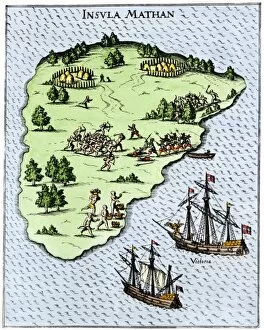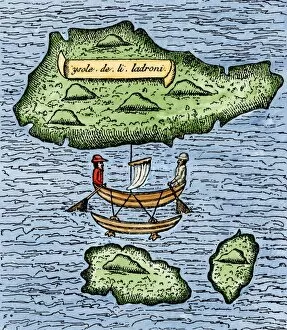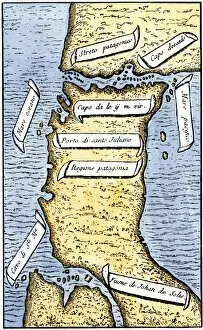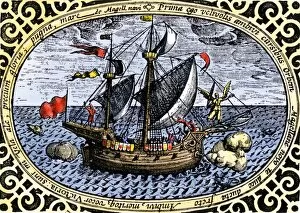Pigafetta Collection
"Pigafetta: A Journey through Unknown Lands" In the captivating book "Small Voyages, " a page in German unveils Part I of Pigafetta's Congo expedition
All Professionally Made to Order for Quick Shipping
"Pigafetta: A Journey through Unknown Lands" In the captivating book "Small Voyages, " a page in German unveils Part I of Pigafetta's Congo expedition. This remarkable explorer, Antonio Pigafetta, is renowned for his involvement in Ferdinand Magellan's groundbreaking voyage that led to the discovery of the Mariana Islands in the Pacific back in 1521. One of Pigafetta's prized possessions was his early 16th-century compass, famously depicted and cherished by historians. This compass guided them through treacherous waters as they navigated the Straits of Magellan, as showcased on Pigafetta's meticulously crafted map. The Ladrone Islands were another significant find during their journey. Discovered by Magellan and his crew, these islands left an indelible mark on history. Engravings based on Pigafetta's detailed map provide us with a glimpse into this extraordinary encounter. French drawings inspired by Pigafetta's firsthand account take us further into uncharted territories—the Moluccas or Spice Islands—where exotic spices awaited European explorers eager to expand trade routes. Francesco Antonio de Pigafetta himself was not just an observer but an active participant in these expeditions. Born in 1480 and passing away in 1534, he dedicated his life to documenting these incredible voyages that forever shaped our understanding of the world. Pigafetta's legacy lives on through these captivating artifacts and accounts—a testament to human curiosity and determination to explore beyond known horizons. His contributions continue to inspire generations as we unravel new mysteries across land and sea.













